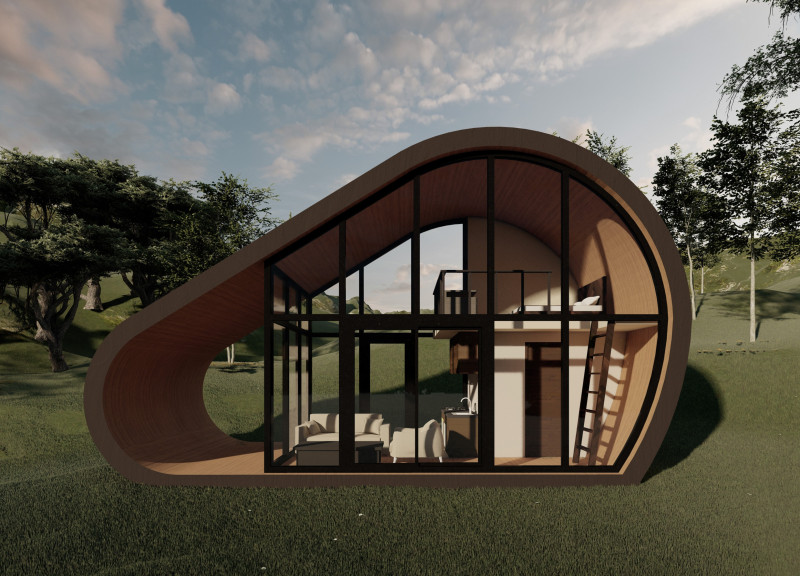5 key facts about this project
The project showcases a design that emphasizes sustainability and resource management. Located in an area that values ecological responsibility, the building employs a modern approach to its form and function. A sloping roof is a key feature, designed specifically for water collection. This choice not only improves environmental performance but also enhances the overall usability and aesthetic appeal of the building, meeting the needs of its occupants effectively.
SLOPING ROOF
The sloping roof defines the building’s character, allowing for effective water collection while maintaining a visual relationship with the surrounding landscape. This feature aids in natural drainage, integrating the structure within its environment. The roof's shape contributes to the overall architectural design, creating a unique outline.
SOLAR PANELS
Solar panels are strategically integrated into the roof design to support renewable energy use. Positioned to capture maximum sunlight, these panels play a significant role in improving the building’s energy efficiency. This integration reflects an awareness of current needs for sustainable energy solutions, reducing dependence on external energy sources over time.
MATERIAL SELECTION
The building uses glued structural laminated timber, a material that offers strength while also being lightweight. This allows for open spaces without risking structural stability. The choice of timber not only streamlines construction but also adds warmth to the design, creating a connection to natural elements. Flexible wood panels complement the overall aesthetic, providing benefits in insulation and sound control.
CLIMATE CONTROL ELEMENTS
A vapor barrier is included as a vital element for managing moisture and regulating the internal climate. This detail helps maintain comfort for the occupants while protecting structural components. The built-in support structures work alongside the roof’s slope to ensure appropriate stability and functionality throughout the building.
Natural light enters through varying panel configurations, creating lively interior spaces that adapt to changing daylight throughout the day. This dynamic interaction with light enhances the experience within, providing an inviting atmosphere.



















































